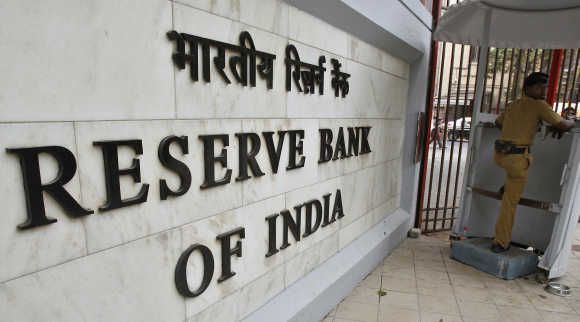
Further cut in repo rate will be good, but a few other issues need to be resolved for better results
The Reserve Bank of India's bouquet of measures to improve liquidity will provide some relief to banks.
The move is also in contrast to its earlier stance that liquidity issues have little to do with the central bank.
The biggest of the three key measures to improve liquidity is the reduction in minimum daily maintenance of cash reserve ratio by banks from 95 per cent to 90 per cent of their net demand and time liabilities (NDTL, or the sum of all deposits with the bank).
Banks will gain Rs 20,000-21,000 crore or Rs 200-210 billion (via increased liquidity), says Madan Sabnavis, chief economist at Care Ratings.
He says a 50-basis-point cut in CRR would have released Rs 50,000 crore (Rs 500 billion).
The reduction in marginal standing facility rate by 75 bps and increase in reverse repo rate by 25 bps will benefit banks in the form of lower cost of funds and higher income, respectively.
The third measure is to lower liquidity deficit in the system from one per cent of NDTL to near-neutral.
While this is again a shift in RBI's stand on maintaining liquidity deficit at one per cent so far, it is positive.
The gains will be gradual as the measure will be executed over 12 months or so.
These measures should improve systemic liquidity and put downward pressure on banks’ cost of funds, enabling them to lower rates. Lower rates are seen as a precursor to loan growth.
For now, the jury is out on whether and how soon banks will cut rates, and to the extent they will gain.
While many experts believe there will be better transmission besides lower cost of funds for banks, Suresh Ganapathy, financials analyst at Macquarie Capital, differs.
Ganapathy says banks will find it difficult to cut deposit rates aggressively.
For liquidity to improve, a decline in government’s cash balance with RBI is crucial.
Tirthankar Patnaik, India strategist at Mizuho Bank, says, “Since February, liquidity deficit was around 2.5 per cent of NDTL.
Government cash balances today are Rs 1.3 lakh crore and form 1.5 per cent of NDTL.
If this is (brought) down to Rs 40,000-50,000 crore (Rs 400-500 billion), liquidity deficit, too, will come down one per cent.”
The RBI head pointed out the excess cash in the system. All these issues need to be resolved for steps to percolate faster and effectively.











